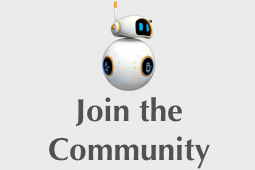Making Predictions: A.I. in the Future Classroom
Along with the proliferation of personalized learning platforms also comes the rise of the presence of artificial intelligence in schools… Artificial Intelligence defined, deconstructed, and analyzed for education technology applications.

Along with the proliferation of personalized learning platforms also comes the rise of the presence of artificial intelligence in educational technology. Before going further, we must first acknowledge the truth about the term artificial intelligence — it is a buzzword that connotes many different applications. It holds different meaning in different contexts and, much of the time, is used indiscriminately without clear boundaries or specifications.
To try and avoid just adding to the noise, we will focus on three main topics: (1) deconstructing the buzzword into its component parts, (2) characterizing current use cases and predicting future ones, and (3) exploring risks and trade-offs. First, let us define, as clearly as possible, what all is under consideration when we mention the term.
Trending AI Articles:
1. Setting up a scalable data exploration environment with Spark and Jupyter Lab
2. Visual Music & Machine Learning Workshop for Kids
3. The Proof of Machine Consciousness Project
4. Is Flubber Sentient?
Deconstructing the Term “Artificial Intelligence”
We’ll begin by separating artificial intelligence into two large, admittedly broad buckets. The first bucket is machine learning.
A.I. Bucket #1: Machine Learning. In a simple sense, machine learning is when large sets of data are used to build and train a “model” (read: algorithm, code, program) that learns on its own, identifies patterns, and makes decisions automatically without intervention. The following terms are either other applications of machine learning or enhancements in the analysis process of machine learning.
Process Enhancements within Machine Learning
Deep Learning. Typically, machine learning goes from large data sets to building models manually to insights. Deep learning is the use of “neural networks” to further automate and facilitate the model building/testing/training part.
- Components of Deep Learning: Neural Networks. Neural networks are layers of algorithms that are designed to automatically recognize patterns in data, rather than be manually trained.
Applications of Machine Learning
Pattern Recognition. Sometimes called data mining or knowledge discovery in databases (KDD), pattern recognition is self-explanatory. Many in industry today mentioning “machine learning” are referring to this application of it.
Natural Language Processing. Natural Language Processing (NLP) is a machine learning application in which the “data” being used to train a model is typically human language in the form of text and/or voice in raw form. This allows data scientists and engineers to train a computer to understand human language in many contexts.
Most of today’s practical applications of A.I. are more specifically machine learning applications. We are already seeing many of these applications of artificial intelligence in the education technology sector as well. However, at the other end of the spectrum of we might call artificial intelligence are a lot of fantastical ideas that lead to even more fantastical futurist implications. We’ll call this second bucket “Robotics and Beyond”.
A.I. Bucket #2: Robotics and Beyond. These terms most likely incorporate some time of machine learning components in their data and coding structures but are much more tangential applications, incorporating the fields of robotics, biology, and physiology, to name a few. For each of the below applications, machine learning is just one input among a broader set used to implement the technology.
Applications of Robotics
Virtual Companions / Chatbots / Robotic Personal Assistants. Artificial human companions are basically any hardware or software that is designed to serve as a companion to others. Naturally, it incorporates machine learning, but the broader implications are in recognizing empathy and human emotion.
Thought-Controlled Gaming. Several advances in neuroscience and virtual reality have made it possible to move objects in a simulation based on information that brain sensors pick up from your mind.
Real-Time Emotion Analytics. Using physiological signals and computer algorithms to detect human emotion in real-time.
…and many more. The above list is by no-means exhaustive.
Current Use Cases and Futurist Views of Artificial Intelligence
Now that we’ve adjusted our definition of artificial intelligence, let’s explore the practical, probable, and possible applications of all of the aforementioned A.I. technologies.
General Machine Learning
- Use Case: Adaptive learning capabilities in testing and assessments in personalized learning platforms.
- Futurist View: Using predictive analytics for real-time lesson adjustment in a classroom based on formative assessment scores. As teachers check for understanding, a recommendation engine could adjust the online exit tickets to shift focus to a different learning objective.
Natural Language Processing
- Use Case: Voice and text recognition features in language learning applications. See here for an emerging technology — automated speech recognition.
- Futurist View: Chatbots and virtual tutors that actively assist students in the learning process, intervening when necessary based on intuition of learning concept at play. NLP is a fast-evolving field and there is plenty of speculation as to where it goes next.
Deep Learning
- Use Case: Image identification in Google.
- Futurist View: Facial recognition software that monitors the reactions of students during points in a lecture. Grading software that can critique student writing from not only a grammar view, but also on more subjective qualities like tone, perspective, and degree of critical analysis.
Thought-Controlled Gaming
- Use Case: Thus far, the application is only in virtual-reality gaming.
- Futurist View: In the future, one might be able to infer the implications on game-based learning or even workplace learning simulations. Can you think your way through a conversation with a student or client in a virtual environment before you’ve even had it?
Virtual Companions/Chatbots/Robotic Personal Assistants
- Use Case: Currently, there are application in robo-pets and other robot-like hardware applications for people’s entertainment.
- Futurist View: With the increasing awareness of social-emotional learning and emotional intelligence research, there could very well be an increase in robots to teach emotional intelligence and emotion recognition in school and workforce settings. A one-on-one tutoring robot could support teachers in after-school tutoring.
Real-Time Emotion Analytics
- Use Case: Currently, this application is still in its research phase.
- Futurist View: However, what if teachers could look at an analysis of their students’ emotional reactions after a lesson on the Odyssey? How could that dictate and influence instructional techniques thereafter? Tapping into the emotions of your students is imperative for effective instruction.
Risks and Trade-offs Necessary to Consider
It is easy to imagine all of the possibilities that artificial intelligence can bring to learning and schooling, but it would be presumptuous to dive in without considering potential consequences as a result of it.
Privacy. Machine learning and other artificial intelligence applications need a LOT of data to work effectively. Increased demand for more data in a school setting runs the risk of data privacy concerns. How do we make sure that these large data sets are not in the wrong hands?
Efficacy. Tracking impact of artificial intelligence features on actual student learning and assessment scores has of yet been ignored. This speaks to a broader trend in the efficacy of learning technology — how can one prove that instituting artificial intelligence in classroom technology actually improves student learning? This will need to be done on a case-by-case basis.
Learning. The approach to a holistic education is threatened by the advance in artificial intelligence technology. With so much adaptive technology that “meets students where they are”, how might that change students’ expectations and behaviors as they progress through the educational system and into the workforce? What does grit look like? How do we ensure that students’ are still learning the skills necessary to adapt in a modern world?
Have feedback or thoughts on this article? As a former educator turned technologist, I am passionate about managing products and developing strategic partnerships for technology organizations that seek to enhance learning experiences. Feel free to reach out to me via e-mail or leave a comment below to continue the discussion.
Don’t forget to give us your 👏 !



